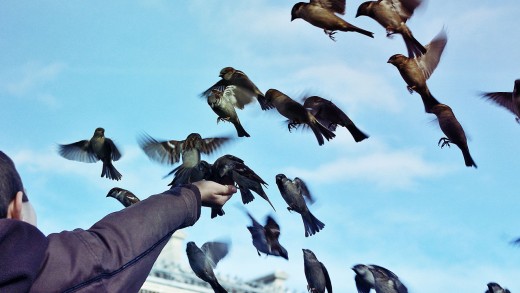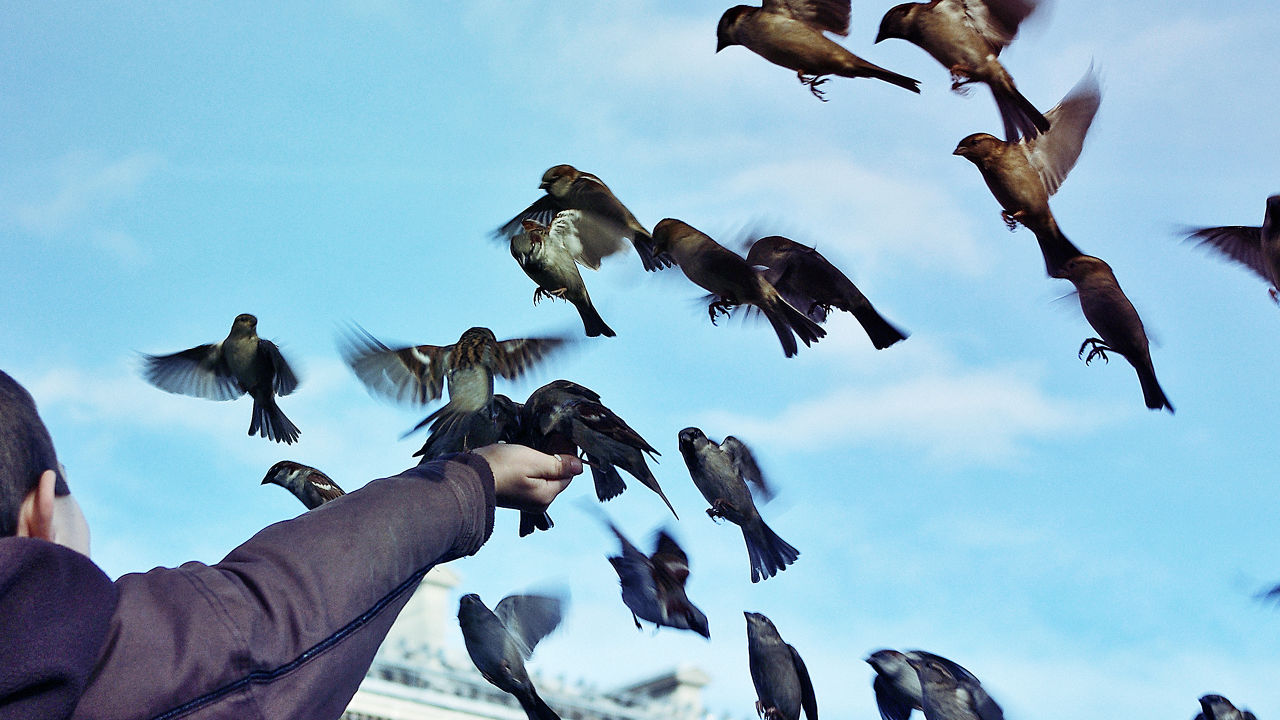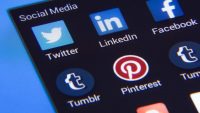a short historical past of Open Letters To Twitter
everybody has all the time identified precisely what Twitter has wanted to do. in an instant! this is proof.
January 26, 2016
Slate‘s David Auerbach has a plan to repair Twitter. in brief, it entails making it a extra welcoming situation and minimizing harassment by way of protecting users from tweets instead of these despatched by folks they’ve chosen to apply. He outlines his strategy—soberly headlined “What Twitter must Do”—within the kind of an open letter to Twitter itself:
Social networks comparable to Twitter and fb share two features: they’re information networks for prime-content material subject material sharing and friendship networks for low-content social interplay. by way of the usage of defaulting to mostly public information sharing, Twitter has transform an excellent information group alternatively a horrendous friendship group. at present, the friendship network is the associated charge you pay for the guidelines neighborhood. then again proscribing information sharing to cut again trolling will in basic terms flip you right into a 2d-price facebook and doom you for sure. rather, Twitter, you need focus on information sharing even as you intestine and rebuild the friendship community, devolving moderation right all the way down to explicit particular person buyers.
That’s why you wish to rethink your self from the ground up. commence with an data group of tweets and retweets alternatively no replies or mentions as we at existing recognize them. Twitter customers would see what their pals put up and retweet and subscribe to folks they to seek out via retweets or hashtags. Already, things are a lot better. You don’t come throughout anyone beyond the filter of your checklist of friends except for you search a hashtag. If a hashtag fills up with crap, you avoid it.
thru helpfully offering advice right away to Twitter in the kind of an open letter, Auerbach is following a practice which is been spherical virtually so long as Twitter has been a family title.
What leads people to jot down these letters? neatly, greater than every different up to date kingpin of the web, Twitter has not at all reached some degree of glad equilibrium in which every person sees eye to eye it may be in improbable shape. a big chunk of its customers have always been sure that it needs to to alter—and a long way of the remainder chunk has consisted of people who are afraid that Twitter will exchange.
furthermore, the service’s intensely private feel leads many people to conclude that every one Twitter needs to do to thrive is to make individuals like themselves happier—despite the fact that Twitter is radically various things to definitely completely different customers.
Herewith, some previous letters to Twitter, dating again to the generation when it used to be once a privately owned startup with 18 million consumers, 30 workforce, and no merchandising whatsoever.
April 2009: “An Open Letter to Twitter”
In an early instance of the Twitter open letter, net developer Arthur Kay tells Twitter that it’s primarily worrying, however—not like many who would follow—fails to provide any recommendation on the subject:
What am I doing at the moment (in one hundred forty characters or less)? I’m wondering why somebody cares! If somebody actually wants to bear in mind what I’m doing, they should name me. within the experience that they don’t have my telephone quantity, then I’m concerned they may be stalking me.
considerably, if somebody has time to shock what Shaq is doing correct this minute then they if truth be told need to get a existence. If he’s doing something rewarding, it will make the ideas.
Twitter—you wish to have to stop this madness. your friends are encouraging individuals to share intimate private important points about themselves together with your entire world. . . and i’m if truth be told getting sick of companies and [newscasters] saying “take a look at us out on Twitter.”
June 2010: “Get Shorter: An Open Letter to Twitter”
In no less an august venue than the logo new Yorker, Blake Eskin gripes that the http:// in hyperlinks eats up too many valuable characters, and should get replaced with a single picture:
Winstead proposed a colon (e.g. :tmky.us/3191); Kottke instructed % or //; another correspondent floated ^ or =>. my very own desire can be for !, despite the fact that I came upon, on a website online dedicated to microsyntax, proposals that the exclamation level should be reserved for “pressing or time-delicate posts” or concurrently a Tweet 911, for posts “related to a particular named disaster or emergency.” In either case, it’s going to want to be reclaimed from bubbly teens, soccer lovers, and publicists.
July 2011: “expensive Twitter: don’t trade the 100 forty-persona restrict”
Responding to Farhad Manjoo’s name for Twitter to double its 100 forty-character limit, my buddy Lance Ulanoff contends that longer tweets would least difficult motivate folks to hold conversations on Twitter—and that if individuals want to speak, they will have to use one factor like Google+:
throughout the case of conversations on Twitter, they work differently. continuously anyone posts one factor interesting and someone responds. The response do not have the distinctive tweet, just a little notation that it was once “in reply to…,” which links to the original tweet. These conversations can go on for some time and from time to time enlarge to quite a lot of Twitter individuals. the person outside the dialog will see a random submit from this Twitter conversation of their feed and have utterly no thought what it’s about. dialog tends to muddle up Twitter and make it a ways much less helpful. this is not to claim that i do not use Twitter for crowdsourcing. I ask concise questions and get concise solutions.
individuals who are looking to have conversations on line have a large number of choices, at the side of outdated-college boards, facebook, and threaded comments on various internet web sites. Google+ is the most up to date and simply most enjoyable one. i’m the usage of it to say additional and gather richer thoughts from all Google+ dialog members. Oddly, I on occasion need to remind myself that i will be able to submit and reply in further than 100 and forty characters (I see other folks with this downside, too).
December 2011: “Twitter, How About releasing Some Usernames?”
In a put up which makes use of the phrase “An Open Letter to Twitter” as as subheading, the Royal Pingdom weblog argues that too most of the superb Twitter client names are in limbo, registered to people who don’t use them:
It doesn’t need to be subtle. If a Twitter account is completely unused for six months, go ahead and delete it. If you need to, ship an electronic mail to customers before you do it and gives them every week to check in to keep away from having the account deleted.
Granted, you’ll have fewer “registered clients” to boast about for those who start deleting unused money owed, however this is the appropriate thing to do. Your customers may have a more sure introduction to your provider and a better consumer experience.

February 2012: “pricey Twitter: don’t mean to be impolite, but probably it’s time to hire a Full-Time Product man”
Eleven months after Twitter cofounder Jack Dorsey’s return to the corporate as chairman—splitting his time alongside with his new startup square—business Insider founder Henry Blodgett concludes that the company’s concerns are too massive to be solved on an element-time basis:
So, how’s Jack doing?
well, formally, everyone raves regarding the glorious leadership and affect Jack has had at Twitter, and all and sundry gushed in every single place certainly one of the hottest product innovations Twitter introduced beneath Jack’s leadership.
however i’ve to assert this.
As a vastly heavy Twitter shopper, the up-to-the-minute modifications that Twitter has made to my Twitter app—TweetDeck—have been fascinated with the more serious.
My outdated TweetDeck for iPhone stopped working, so I needed to make stronger to the brand new one. sure, it is buggy and crash-inclined, however the previous model had that problem, too. however it definitely’s the “improvements” to the emblem new edition of the TweetDeck app that bug me the most. i will not chronicle them right here, but suffice it to say that i do not like them. the emblem new variation of TweetDeck is now much less intuitive and harder to make use of than the previous one. and i’m protecting Jack liable for that.
October 2013: “An Open Letter to Twitter”
conversing on behalf of advert-deleting software Adblock Plus, Ben Williams urges Twitter to come up with ads which ABP users will not want to block:
…your customers would possibly not be too extremely joyful about what’s in retailer—and so that it will inevitably ship that many extra of them running to Adblock Plus. Our numbers are swelling despite the fact that promotion revenue is rising as neatly. Over 200 million other folks have downloaded our instrument, and remaining week on my own we had over 1.5 million downloads. Your current advert alternatives are actually not a long way from what we’d consider non-stressful (see additional under)—however the considered a principally changed Twitter, now with advertisements spherical every corner, could direct clients to Adblock Plus for no different result in than that they need their “out of date” Twitter back.
So why no longer work collectively? We wish to companion with you to engineer applicable, nonintrusive promotion that may conform to our pointers and make it to our whitelist. That’s right, we want you to promote. however we wish you to do it responsibly, through adhering to our acceptable advertisements pointers.
March 2015: “An Open Letter to Twitter HQ”
Semil, a contributor to a web web page referred to as Openlttr, principally informs Twitter that it’s way too stagnant, and should believe new features similar to Klout-like popularity rankings:
Reward engagement with popularity—presumably just like an eBay rating or discussion board rating mechanism. the higher your number the extra most certainly your engagement will also be seen by means of a highlight, notification, or show in streams. Or in all probability create a perks system for the extremely full of life users. enticing folks to interact will reward content material producers for his or her effort and time with a straightforward retweet or comment, and it’ll go far.
another perk proper right here can also be to allow folks to make a choice what degree of acceptance score they wish to see on a daily basis or perhaps have highlighted to them with a notification.
August 2015: “An Open Letter to Twitter: it is time to promote”
advert man Rick Webb proclaims that Twitter’s salvation includes goosing its consumer base with the aid of the usage of spending at the least $100 million on…merchandising itself!
Twitter has advertised on tv ahead of, or at the least made T.V. ads. There’s each other one I remember the fact that given that was an excellent form of anthemic, inspirational piece. i will’t to find it on line anymore. but it surely was once in reality good. Like many individuals who dip their toes into broadcast, it used to be too little media time, and presumably too soon. They used some people they knew personally (I hear), and didn’t actually get some hardcore, outdoor genius experts. by the use of the best way, that’s a great, beauty of the advertising trade — it’s doesn’t value any longer to appoint a legend harking back to Lee Clow because it does someone else. God bless just right old-fashioned American competitors, amirite?
however Twitter is a definite company now. they’ve the money, they’ve the product, they have the story, they have the mainstream viable. In selling, that’s exactly when wide-unfold, go-giant tv merchandising turns into one factor you should severely consider.
January 2016: “dear Twitter: Please don’t Do It”
Alarmed thru the most recent spherical of rumors that Twitter would possibly let individuals to share textual content in approach-better-than-one hundred forty-persona chunks, marketer David Meerman Scott thinks that the status quo is k:
At its core, Twitter is an precise-time medium. It’s for a snappy notion or a handy guide a rough-paced conversation. Hashtags permit us to watch what’s #trending.
Twitter isn’t perfect for developing unique lengthy-variety content, despite the fact that it is a tool for sharing what exists on completely different internet sites and networks.
studying by means of all of those, i am struck with the aid of their assured tone. additionally obtrusive: lately’s Twitter would not appear to have been formed in the least during the form of recommendation doled out in open letters, with the possible exception that it continues to grasp to the one hundred forty-personality prohibit, as a minimum for now.
And what? If Twitter had utilized most of the suggestions which individuals dispense in these letters, I wager that its current health would not be radically absolutely different a technique or another. And it doesn’t matter what, the letters would have saved on coming. that is a part of what makes Twitter, neatly, Twitter.
fast firm , research Full Story
(33)














